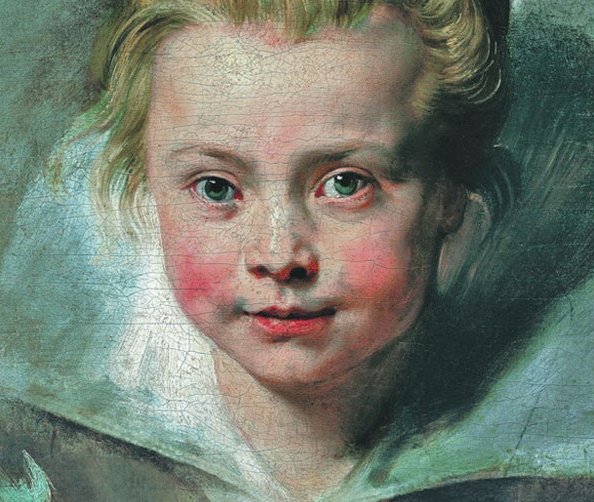Princely collections debut in China's state museum
German art critic and Flemish painting specialist Wilhelm von Bode once praised the eminence of Liechtenstein's royal collection of Rubens, saying that a complete knowledge of the great Flemish master cannot be acquired without having seen his works at the Liechtenstein gallery.
The prince of Liechtenstein is noted for assembling one of the finest holdings of Rubens' works, along with the Louvre, Museo Nacional del Prado and the Munich-based art museum Alte Pinakothek.
Those in Beijing can now catch a glimpse of the richness and comprehensiveness of Liechtenstein's royal treasures, which are being exhibited for the first time in China.
|
Portrait of Clara Serena Rubens. Provided to China Daily |
The exhibition at the National Museum of China brings wide-ranging examples of Rubens' art, as well as works of his student Van Dyck and other Flemish painters, to cover the entire spectrum of Flemish painting.
It gives a coherent overview of the art development during the 16th and 17th centuries in southern Netherlands, according to NMC's deputy - director Chen Lyusheng.
"The collections date back to the 17th century. The number of items isn't large but the quality can rival many world-class museums," he says.
"Previously at the Renaissance in Florence exhibition, viewers got to appreciate the works of The Big Three of Italian Renaissance: Da Vinci, Michelangelo and Raphael. This time, the great excitement comes with the juxtaposition of Rubens and Van Dyck."
Johann Kraeftner, director of Liechtenstein, The Princely Collections, adds that of the numerous treasures of the Baroque era, Flemish paintings hold much importance.
"Rubens and his pupil Van Dyck represent the landmarks of Flemish paintings. The princely collections feature one of the largest bodies of Rubens' works that include 30 paintings and oil sketches, as well as more than 20 paintings by Van Dyck," he says.
The exhibition displays 100 oil paintings, prints, tapestries with various genres including portraits, landscapes and still-life. Kraeftner says many of the works "have been painstakingly restored and have never been shown in public before".
Rubens' works feature mythology and religious themes and the Decius Mus circle, in addition to portraits and prints.Highlights include the famous Portrait of Clara Serena Rubens, a small oil painting which captures the innocence and loveliness of the painter's 5-year-old daughter.
Some carefully curated sections show works in three different versions: the draft, the completion and the tapestry in wool and silk. Mars and Rhea Silvia, for example, is shown in these three forms. When comparing the different versions, one will notice that Rubens had already enlivened the gestures and expressions of the god of war and the priestess even at the stage of sketching.
Mars moves aggressively toward Silvia who, however, leans back slightly out of shyness. And the painter demonstrated great intensity via the eye contact between the two.
This creative impulse that Rubens had presented in the sketch somewhat overshadowed the latter large-size painting and woolen tapestry.
Meanwhile, Van Dyck fully manifested his prodigious skills in both Saint Jerome, which he painted at only 17, and Portrait of Maria de Tassis, which is ranked a masterpiece of his output.
Following the Liechtenstein pavilion's appearance at the 2010 Shanghai Expo, the exhibition marks another grand event to connect Chinese viewers with the Central European country, through the presence of one of the most important private assemblies of European art.
Kraeftner says from the beginning of the 19th century, Liechtenstein has been an important patron of art and architecture on one side and a serious collector of art on the other.
"For generations, the Liechtenstein dynasty has maintained and added to the collections, pursuing a consistent policy which continues to enhance the enduring collections. Only the now reigning Prince Hans-Adam II has added more than 700 works of art in the last 30 years," he says.
The painting collection alone boasts around 1,700 objects in addition to more than 500 sculptures together with large holdings of engravings, porcelains, furniture, tapestries, Kunstkammer (cabinets of curiosities) objects and hunting firearms.
After the Beijing exhibition, the collections will move to Shanghai's China Art Museum from March to June.
linqi@chinadaily.com.cn



















